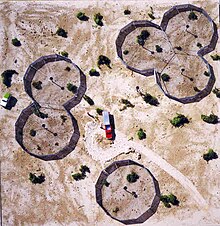
Richard Buckminster Fuller was an American architect, systems theorist, writer, designer, inventor, philosopher, and futurist. He styled his name as R. Buckminster Fuller in his writings, publishing more than 30 books and coining or popularizing such terms as "Spaceship Earth", "Dymaxion", "ephemeralization", "synergetics", and "tensegrity".
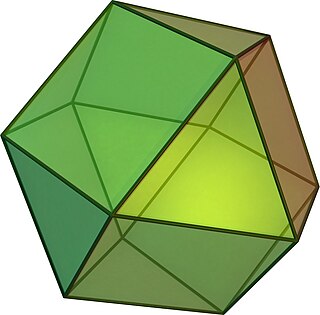
A cuboctahedron is a polyhedron with 8 triangular faces and 6 square faces. A cuboctahedron has 12 identical vertices, with 2 triangles and 2 squares meeting at each, and 24 identical edges, each separating a triangle from a square. As such, it is a quasiregular polyhedron, i.e. an Archimedean solid that is not only vertex-transitive but also edge-transitive. It is radially equilateral.

In geometry, an icosidodecahedron is a polyhedron with twenty (icosi) triangular faces and twelve (dodeca) pentagonal faces. An icosidodecahedron has 30 identical vertices, with two triangles and two pentagons meeting at each, and 60 identical edges, each separating a triangle from a pentagon. As such it is one of the Archimedean solids and more particularly, a quasiregular polyhedron.
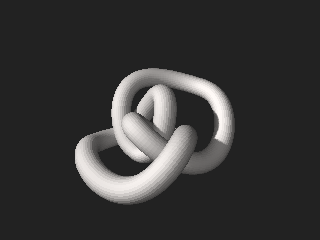
In mathematics, topology is concerned with the properties of a geometric object that are preserved under continuous deformations, such as stretching, twisting, crumpling, and bending; that is, without closing holes, opening holes, tearing, gluing, or passing through itself.

In geometry, the truncated icosahedron is an Archimedean solid, one of 13 convex isogonal nonprismatic solids whose 32 faces are two or more types of regular polygons. It is the only one of these shapes that does not contain triangles or squares. In general usage, the degree of truncation is assumed to be uniform unless specified.

A geodesic dome is a hemispherical thin-shell structure (lattice-shell) based on a geodesic polyhedron. The triangular elements of the dome are structurally rigid and distribute the structural stress throughout the structure, making geodesic domes able to withstand very heavy loads for their size.
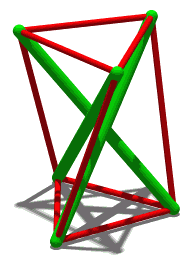
Tensegrity, tensional integrity or floating compression is a structural principle based on a system of isolated components under compression inside a network of continuous tension, and arranged in such a way that the compressed members do not touch each other while the prestressed tensioned members delineate the system spatially.

In architecture and structural engineering, a space frame or space structure is a rigid, lightweight, truss-like structure constructed from interlocking struts in a geometric pattern. Space frames can be used to span large areas with few interior supports. Like the truss, a space frame is strong because of the inherent rigidity of the triangle; flexing loads are transmitted as tension and compression loads along the length of each strut.

James Tennant Baldwin, often known as Jay Baldwin or J. Baldwin, was an American industrial designer and writer. Baldwin was a student of Buckminster Fuller; Baldwin's work was inspired by Fuller's principles and, in the case of some of Baldwin's published writings, he popularized and interpreted Fuller's ideas and achievements. In his own right, Baldwin was a figure in American designers' efforts to incorporate solar, wind, and other renewable energy sources. In his career, being a fabricator was as important as being a designer. Baldwin was noted as the inventor of the "Pillow Dome", a design that combines Buckminster Fuller's geodesic dome with panels of inflated ETFE plastic panels.
R. Buckminster Fuller coined the term design science revolution to describe his proposed scientific and socio-economic revolution accomplished by shifting from "weaponry to livingry" through the application of what he called comprehensive anticipatory design science. His World Design Science Decade, proposed to the International Union of Architects in 1961, was an attempt to catalyze the revolution.
A concept of design science was introduced in 1957 by R. Buckminster Fuller who defined it as a systematic form of designing. He expanded on this concept in his World Design Science Decade proposal to the International Union of Architects in 1961. The term was later used by S. A. Gregory in the 1965 'The Design Method' Conference where he drew the distinction between scientific method and design method. Gregory was clear in his view that design was not a science and that design science referred to the scientific study of design. Herbert Simon in his 1968 Karl Taylor Compton lectures used and popularized these terms in his argument for the scientific study of the artificial. Over the intervening period the two uses of the term have co-mingled to the point where design science may have both meanings: a science of design and design as a science.
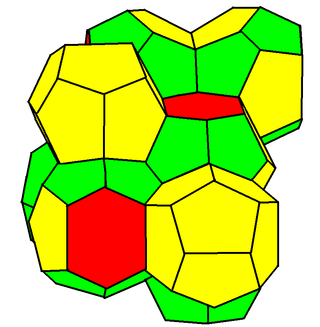
In geometry, the Weaire–Phelan structure is a three-dimensional structure representing an idealised foam of equal-sized bubbles, with two different shapes. In 1993, Denis Weaire and Robert Phelan found that this structure was a better solution of the Kelvin problem of tiling space by equal volume cells of minimum surface area than the previous best-known solution, the Kelvin structure.

The Biosphere, also known as the Montreal Biosphere, is a museum dedicated to the environment in Montreal, Quebec, Canada. It is housed in the former United States pavilion constructed for Expo 67 located within the grounds of Parc Jean-Drapeau on Saint Helen's Island. The museum's geodesic dome was designed by Buckminster Fuller.

In geometry, the trapezo-rhombic dodecahedron or rhombo-trapezoidal dodecahedron is a convex dodecahedron with 6 rhombic and 6 trapezoidal faces. It has D3h symmetry. A concave form can be constructed with an identical net, seen as excavating trigonal trapezohedra from the top and bottom. It is also called the trapezoidal dodecahedron.
Anne Griswold Tyng was an architect and professor. She is best known for having collaborated for 29 years with Louis Kahn at his practice in Philadelphia. She served as a professor at the University of Pennsylvania for 27 years, teaching classes in urban morphology. She was a fellow of the American Institute of Architects and an academician of the National Academy of Design. She is the first woman licensed as an architect by the state of Pennsylvania.

Keith Barry Critchlow was a British artist, lecturer, author, Sacred Geometer, professor of architecture, and a co-founder of the Temenos Academy in the UK.
Synergetics is the empirical study of systems in transformation, with an emphasis on whole system behaviors unpredicted by the behavior of any components in isolation. R. Buckminster Fuller (1895–1983) named and pioneered the field. His two-volume work Synergetics: Explorations in the Geometry of Thinking, in collaboration with E. J. Applewhite, distills a lifetime of research into book form.
Site-specific architecture (SSA) is architecture which is of its time and of its place. It is designed to respond to both its physical context, and the metaphysical context within which it has been conceived and executed. The physical context will include its location, local materials, planning framework, building codes, whilst the metaphysical context will include the client's aspirations, community values, and architects ideas about the building type, client, location, building use, etc.

Generative design is an iterative design process that generates outputs that meet specified constraints to varying degrees. In a second phase, designers can then provide feedback to the generator that explores the feasible region by selecting preferred outputs or changing input parameters for future iterations. Either or both phases can be done by humans or software. One method is to use a generative adversarial network, which is a pair of neural networks. The first generates a trial output. The second provides feedback for the next iteration.
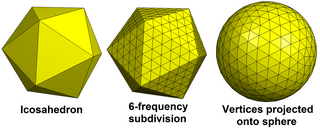
A geodesic polyhedron is a convex polyhedron made from triangles. They usually have icosahedral symmetry, such that they have 6 triangles at a vertex, except 12 vertices which have 5 triangles. They are the dual of corresponding Goldberg polyhedra with mostly hexagonal faces.




